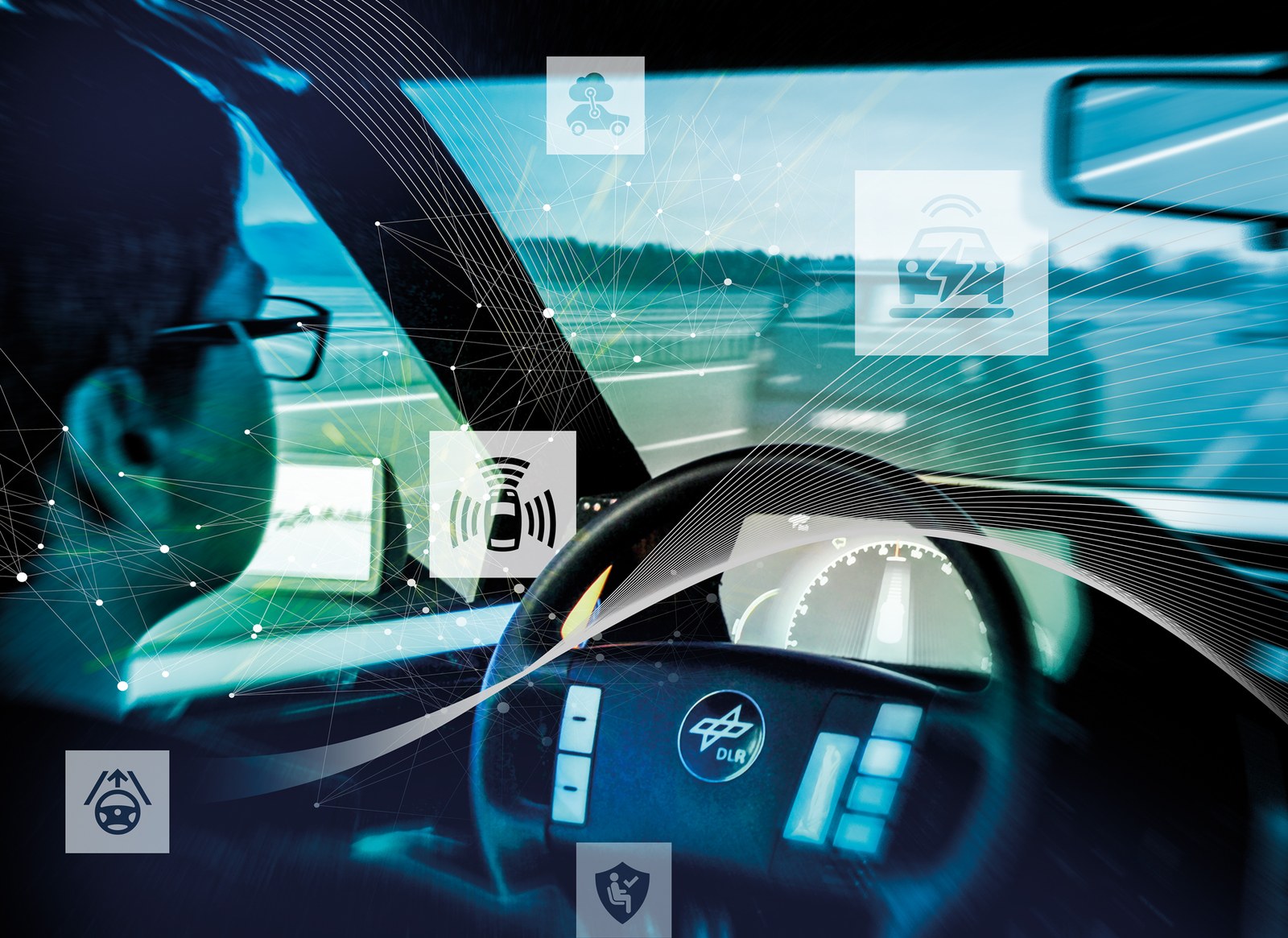Joint Japanese-German research project investigates networked and automated driving

- Together with partners from Japan and Germany, DLR is conducting research in the project CADJapanGermany on specific aspects of the networked and automated driving.
- The focus is on communication between man and vehicle via movements and autonomous driving.
- The aim of the project is to promote technological innovation and to support the social dialogue on this topic of the future.
- Focus: Transport, intelligent mobility, digitalisation
Communication between humans and vehicles and the socio-economic consequences of networked and automated driving are the focus of the Japanese-German collaborative research project CADJapanGermany (Connected and Automated Driving). Two institutes of the German Aerospace Center (Deutsches Zentrum für Luft- und Raumfahrt; DLR) are involved in this international project and are contributing their expertise in the field of transport research. The aim of the participating research institutes and universities is to promote technological innovations and encourage social dialogue on this important future topic for the two automotive nations of Japan and Germany.
Communication between humans and vehicles through motion
To master complicated traffic situations, communication between humans and machines must be quick and reliable. Human interaction with automated vehicles, via human-machine interfaces (HMIs), is therefore the focus of the 'CADJapanGermany: Human Factors' project. The aim is to develop novel interfaces that will enable networked and automated vehicles to communicate with their occupants and other road users. One approach is to use light signals in the form of flashing indicators or text on displays. The team at the DLR Institute of Transportation Systems is also focusing on implicit communication via 'Motion HMIs'. "We are investigating how vehicles can use motion to communicate with people," says DLR resarcher Caroline Schießl. "When an autonomously driven car approaches an intersection, it could very obviously decelerate, so that pedestrians and cyclists recognise that they have the right of way."
In order to develop such motion HMIs, DLR researchers first need to understand the basics of implicit communication between road users. The next step is to identify functional and design requirements of such interfaces, implement them in prototypes and test them in the laboratory with volunteers. To accomplish this task, DLR experts can draw on extensive know-how and a unique infrastructure, including specialised research vehicles, driving simulators and a research hub, to help them determine the effectiveness of human-machine interfaces and to evaluate their ease of use, reliability and safety.
The road to market – influencing factors and consequences
In order to establish networked and automated driving, a large number of very different players, from research and development to manufacturers, regulatory authorities, politicians, customers and users, must work together successfully. In the sub-project 'CADJapanGermany: Impact Assessment', the DLR Institute of Transport Research is using models and computer simulations to investigate different ways in which the smart traffic of the future can spread, known as diffusion paths. "We see two basic development paths for how networked and automated driving can be brought to the market," says DLR scientist Christine Eisenmann. "Either via vehicles that continue to be predominantly private and individually used, or via vehicles used collectively that offer mobility as a service." The question of diffusion, for example, has an impact on the future development of the transport system as well as on the structure of the automotive industry. This is because vehicles used collectively can be much more uniform than today's privately used vehicles, which often have very personalised features. Factors such as the level of automation, technology and mobility costs, and the role of the car in people's everyday lives are other important, interacting aspects of diffusion.
'CADJapanGermany' project and project partners
In order to be able to compare results and evaluations, the German and Japanese partners in the project exchange knowledge and expertise. They are also working towards gaining a comprehensive understanding of the respective national characteristics of the two countries. The research cooperation is funded by the Federal Ministry of Education and Research (BMBF).
DLR's partners in the 'CADJapanGermany: Human Factors' project include the German Technical Universities of Munich, Chemnitz, Dresden and Ulm, and the University of Tsukuba, the University of Tokyo, Kumamoto University, Keio University and the National Institute of Advanced Industrial Science and Technology (AIST) in Japan.
The German partners in the project 'CADJapanGermany: Impact Assessment' are: RWTH Aachen University (RWTH), the Karlsruhe Institute of Technology (KIT) and the automotive manufacturer BMW. The Japanese partners are the University of Tokyo, Kagawa University, Doshisha University, Nagoya University, Nanzan University and the University of Tsukuba.
